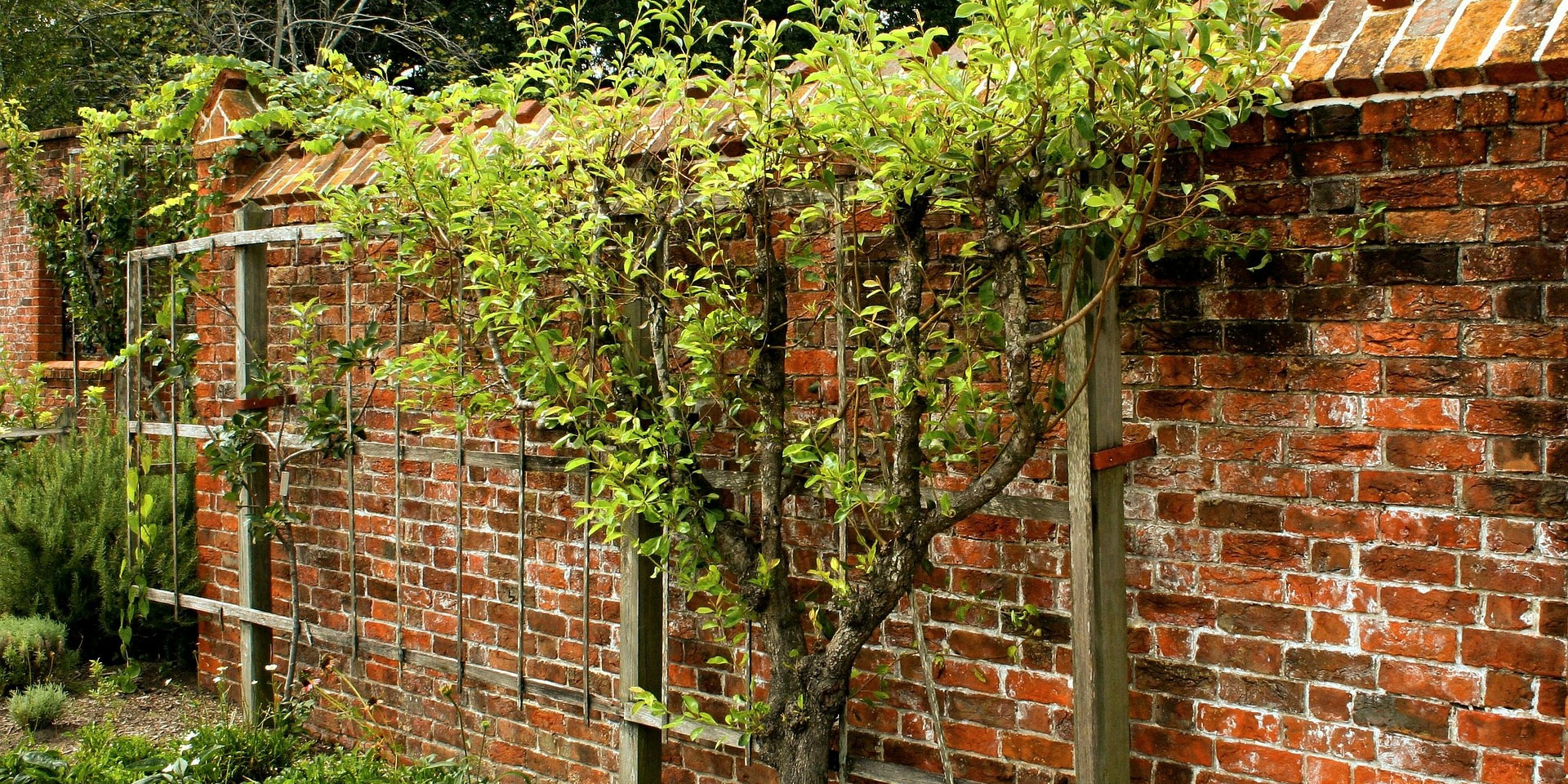
Come autumn time, there’s nothing better than picking sweet, crisp apples and pears right from your own garden. Huge old fruit trees are fantastic if you have the space, but what if you want to grow your own orchard fruit in a smaller garden? Don’t worry, growing cordon fruit trees is a clever space-saving method you can use in the most limited of spaces.
So what are cordon trees? It might be one of those gardening terms you’ve never come across. A cordon tree is simply a fruit tree with just a single main stem that supports several short fruit-bearing side-shoots (or spurs). They can be grown in a pot, against a wall or fence, and even trained up a garden archway.
Here are some useful tips for growing your own cordon apple and pear trees:
Planting
Cordon trees are easiest to grow against a sunny wall. The wall will support and shelter the tree, while its reflected warmth will help to ripen your fruit. Cordons can also be grown free-standing with the right support.
Plant your cordon apple and pear trees in well-draining but moist soil that has been weeded and treated to some fresh manure or compost. Cordon trees don’t like too much wet or cold, so opt for a sunny sheltered spot if possible. If your soil is very fertile and your space is tight, choose a ‘very dwarfing’ or ‘extremely dwarfing’ variety of rootstock when you are choosing your trees so they don’t grow too large.
Winter is the optimum time to plant your trees. If you are planting more than one tree, plant them 60-100cm apart to give each tree space to grow. Cordon fruit trees are often planted at an angle of 45° to give you more fruit at an easy picking height but you can grow them straight up if you prefer. If planting in a pot or container, make sure it is at least 45cm wide and filled with good quality compost.
Supporting
Cordon apple and pear trees need a good permanent support system. Taking the time to do this right at the start is well worth the effort. It’s much easier to set things up correctly than to fix a drooping support or broken tree later on!
Cordon trees need support from strong horizontal wires spaced at intervals of around 50-60cm. The lowest wire should be placed about 30cm from the ground to support the lowest fruiting spurs.
Chose a high-quality, thick wire (2.5mm, gauge 12 galvanised would be perfect) and fix it to your wall or fence using strong straining eye bolts. Choose bolts large enough to support the wire around 10cm from the wall – too close and the air will not be able to circulate between the wall and the trees.
If you are planting free-standing trees, you can attach your supporting wires to sturdy posts dug at least 60cm below ground – essential for withstanding windy weather. Securely tie several diagonal bamboo canes into the horizontal wires to support your cordon tree’s stems. Tie the stems to the canes using soft string.
When your trees are planted, water them in well and cut back any side-shoots that are longer than 10cm so that they have just three buds. This will start your cordon tree off in a nice, balanced shape.
Pruning
Pruning your apple and pear cordon trees is crucial if you want them to remain a manageable size!
The most important cordon tree prune should happen in late summer. Cut back any newly growing side-shoots so that they have just three leaves beyond the basal cluster (that’s the bunch of leaves that forms at the base of the new year’s growth). Existing spurs can be pruned more dramatically – to just one leaf beyond the basal cluster.
A light winter prune can also be a good idea to tidy up any tangled side-shoots and remove any old spurs that are no longer producing fruit. You can also prune your main stem once it has reached a height you’re happy with – just prune any new growth back to just one leaf beyond the basal cluster each spring.
So there you have it. A little effort to provide your cordon apple and pear trees with the support they need and you’ll be reaping the rewards come autumn. Bring on the apple crumble!
